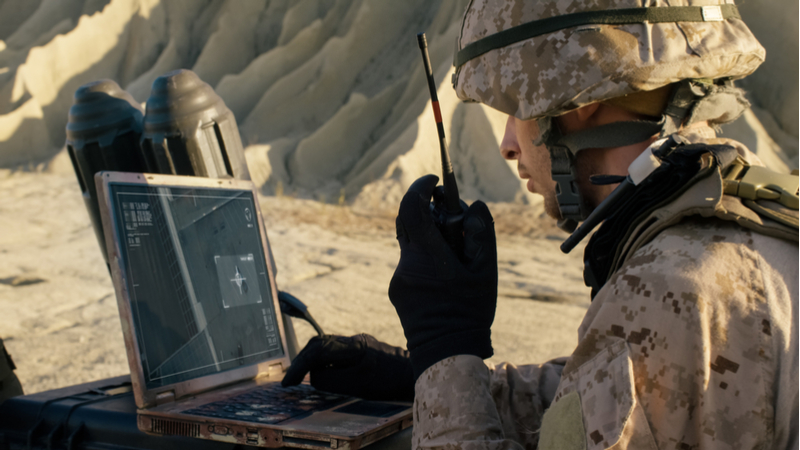
After years on the backburner, electronic warfare (EW) is moving up the ranks as an integral part of the Pentagon’s military focus.
The Army last month received approval to move ground-based EW efforts into the Terrestrial Layer Intelligence System, joining cyber, signals, and other intelligence as part of the Multi-Function Electronic Warfare (MFEW) structure. The service wants to include airborne EW later this year.
A driving force behind the move is the need to get what traditionally have been separate components to work together. “It’s all about integration,” Maj. Gen. John Morrison, commander of the Army Cyber Center of Excellence and Fort Gordon, Ga., said at a recent Association of the United States Army event. “It is really integrating requirements, integrating capabilities into formations so that you can have a combined armed effect inside cyberspace.”
A sure sign of EW’s growing importance is in the assignment of personnel: The Army plans to fold the EW career field (the 29-series) into the cyber operations career field (17-series) by October 2018, with incoming units training together at Fort Gordon and working together thereafter. Another indicator: The Army plans to boost its investment in Multi-Function Electronic Warfare from $4 million in 2017 to $24 million in 2018.
The Army’s efforts are part of a broader Department of Defense (DoD) initiative to emphasize EW. Electronic warfare has been a factor for the military services for as long as they have used radios, but Pentagon officials admitted several years ago that they had largely ignored EW during a decade and a half of focusing on mostly uncontested electromagnetic spectrum environments in Iraq and Afghanistan, where EW efforts largely focused on countering detonation of improvised explosive devices hidden along roadsides. But Russia’s use of EW tools in Ukraine and Syria (which the U.S. commander in Europe called “eye-watering”) and China’s aggressive moves in the Pacific have the Pentagon’s attention.
DoD leaders have considering making the spectrum the sixth official domain of warfare–joining land, sea, air, space, and cyberspace–and have launched a number of initiatives aimed at integrating EW with cyber operations and signals intelligence. Other examples include the Air Force’s Electronic Warfare and Electromagnetic Spectrum Superiority initiative and the Navy’s stepped up efforts on its Next Generation Jammer, designed to counter EW attacks. In terms of the big picture, Under Secretary of the Army Ryan McCarthy has said the Army plans to stand up a “modernization command” made up of cross-functional teams by summer 2018, and the Army will include EW as an essential element in its Cyber Quest 2018 exercise scheduled for June.
As its plans for employing EW increase, so does the need to make more efficient use of the electromagnetic spectrum, which is a finite resource facing ever-increasing demand from commercial as well as military users. The Defense Advanced Research Projects Agency is looking to artificial intelligence to help, with the Spectrum Collaboration Challenge, in which teams from industry and academia are competing to create autonomous systems capable of efficiently managing use of the spectrum. Last month, at the first preliminary round in the three-year tournament, 10 teams each won $750,000 in prize money to help them prepare for the second prelim, which is scheduled for December 2018. The final event will be held in 2019.
